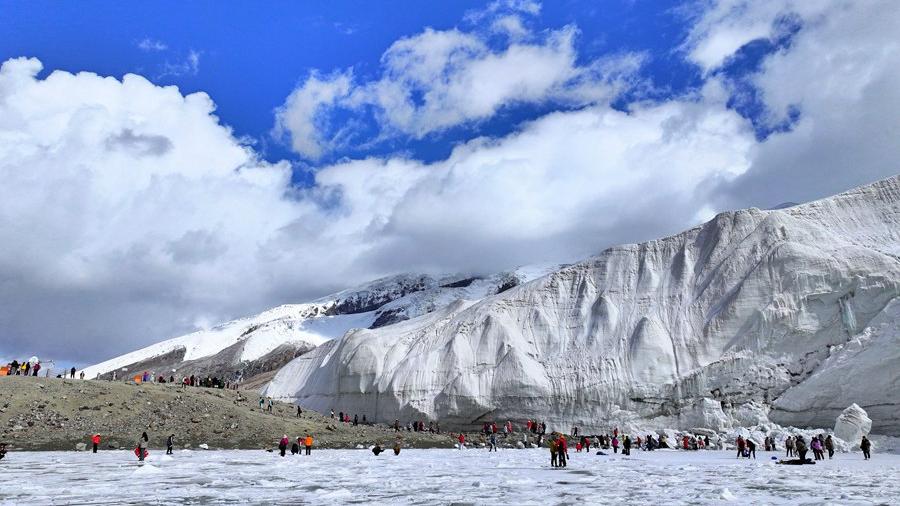News Analysis: Devastating Spanish floods: a deadly convergence of weather, history, climate change
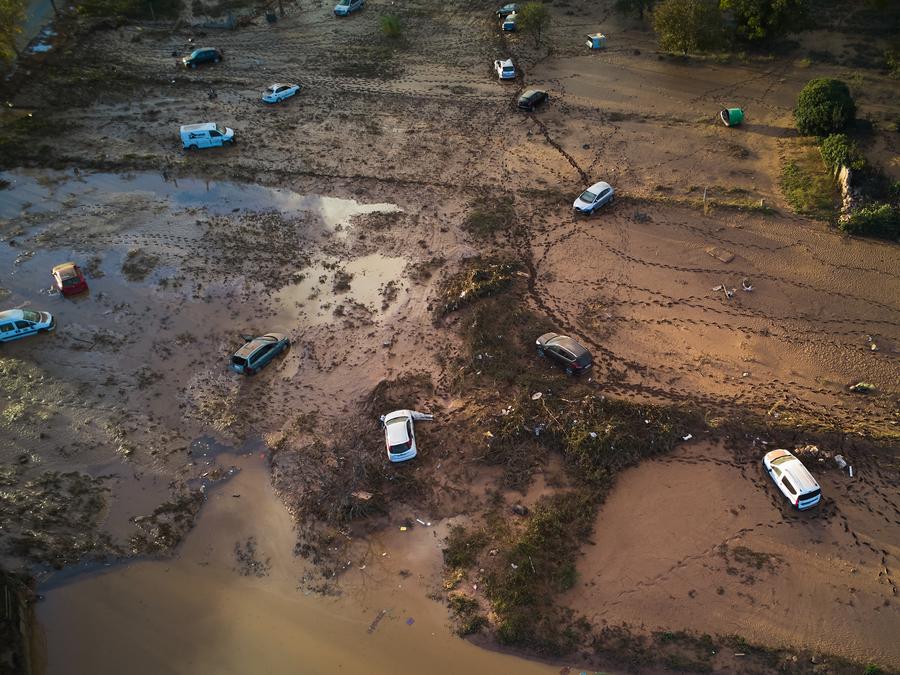
An aerial drone photo taken on Nov. 2, 2024 shows cars damaged in flood in Utiel, Spain. Torrential rains over recent days have triggered Spain's worst flooding in decades. (Xinhua/Meng Dingbo)
According to the Global Water Resources Report released recently by the World Meteorological Organization, climate change has an intensified impact on global water cycles, with some regions grappling with both water shortages and deluges simultaneously.
MADRID, Nov. 3 (Xinhua) -- The flash floods that swept through the Spanish regions of Valencia, Castilla-La Mancha, and Andalusia last week have claimed 217 lives as of Sunday, with many still unaccounted for.
This disaster, triggered by intense rainfall, has been identified by Spanish Prime Minister Pedro Sanchez as the second-deadliest flood event in Europe this century. Experts believe a complex interplay of environmental, historical, and climate factors contributed to the catastrophic outcome.
Heavy rainfall lashed southern and eastern Spain on Tuesday and Wednesday, delivering vast amounts of water over a short period. In Chiva, a town in the Valencian region - one of the worst-hit areas - a staggering 491 liters of rain per square meter fell in just eight hours, equivalent to 20 months' worth of typical rainfall.
The ground conditions exacerbated the disaster. Decades of drought have left the soil across much of the region hardened and rock-like, severely reducing its ability to absorb rainfall. Consequently, the downpour swiftly turned into torrents of water that tore through the landscape, accumulating debris and obliterating anything in their path, including riverbanks, bridges, roads, and railways.
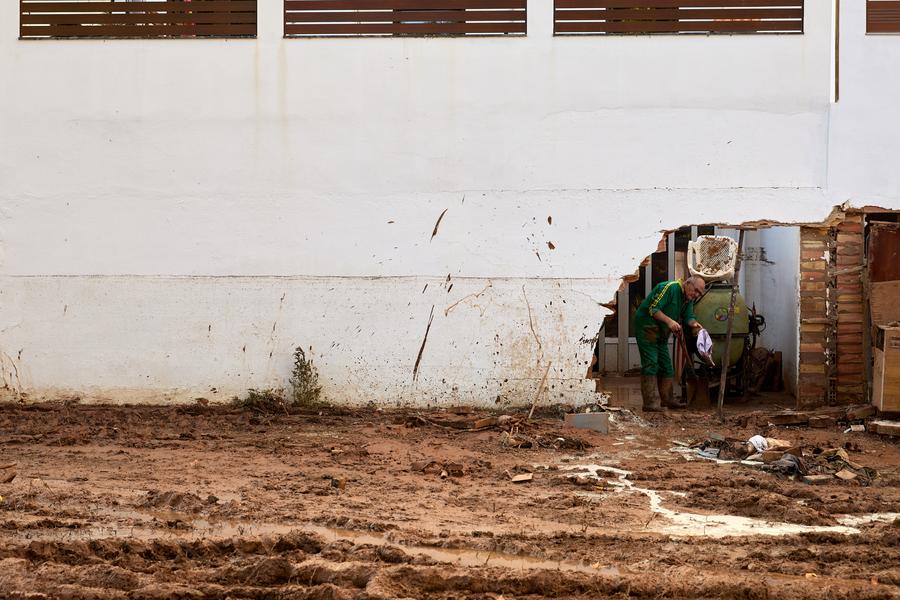
A resident clears his residence after flood in Utiel, Spain, Nov. 2, 2024. Torrential rains over recent days have triggered Spain's worst flooding in decades. (Xinhua/Meng Dingbo)
The torrents swept through residential areas so swiftly that communities had little time to respond. Although Spain's State Meteorological Agency issued a red alert early on Tuesday, warning of torrential rain, the intensity and speed of the floods caught many by surprise.
Tragically, some people were swept away in vehicles. Others, trying to retrieve cars from underground garages, lost their lives in the rapidly rising water. Single-story homes, typical in many small Spanish towns, became death traps, particularly for elderly residents who were unable to escape in time.
This recent disaster is not without historical precedent. The Valencia province has a history of significant floods, including a devastating event in 1957 that left at least 81 people dead and led to the implementation of the "Southern Plan" between 1965 and 1972. This project rerouted the River Turia away from Valencia's city center to mitigate flood risk. However, the diverted river now flows into a marshy lake near the city rather than directly into the Mediterranean, which can still lead to localized flooding in exceptional rainy years. In such instances, suburban towns are often hardest hit.
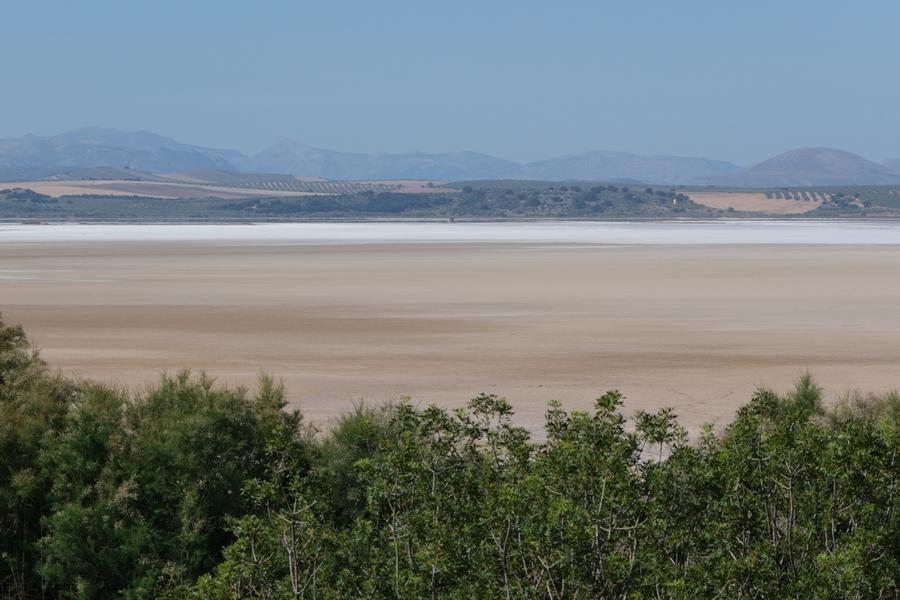
This photo taken on May 8, 2023 shows a dried lake in Malaga, Spain. Spain has been hit by days of heat wave and drought. (Xinhua/Meng Dingbo)
A prolonged drought has also influenced flood management priorities in the region. With southern and central Spain facing severe arid conditions and an advancing threat of desertification, authorities have been focused on preventing water shortages rather than implementing robust flood prevention strategies. These priorities, experts argue, left the region vulnerable to the sudden attack of rain.
Scientists attribute the intense rainfall to a "High-Altitude Isolated Depression" or "DANA" in Spanish - a weather pattern that occurs when warm Mediterranean air meets cold air, creating intense, rapid storms. DANAs are common in southeastern Spain during autumn, but the exceptionally high Mediterranean temperatures recorded in 2023 and 2024 have amplified their effects. Warmer seas cause more evaporation, which fuels larger and more destructive storms, as this recent disaster has illustrated.
According to the Global Water Resources Report released recently by the World Meteorological Organization, climate change has an intensified impact on global water cycles. The report notes that as temperatures rise, the hydrological cycle accelerates, leading to more extreme weather events, with some regions grappling with both water shortages and deluges simultaneously.
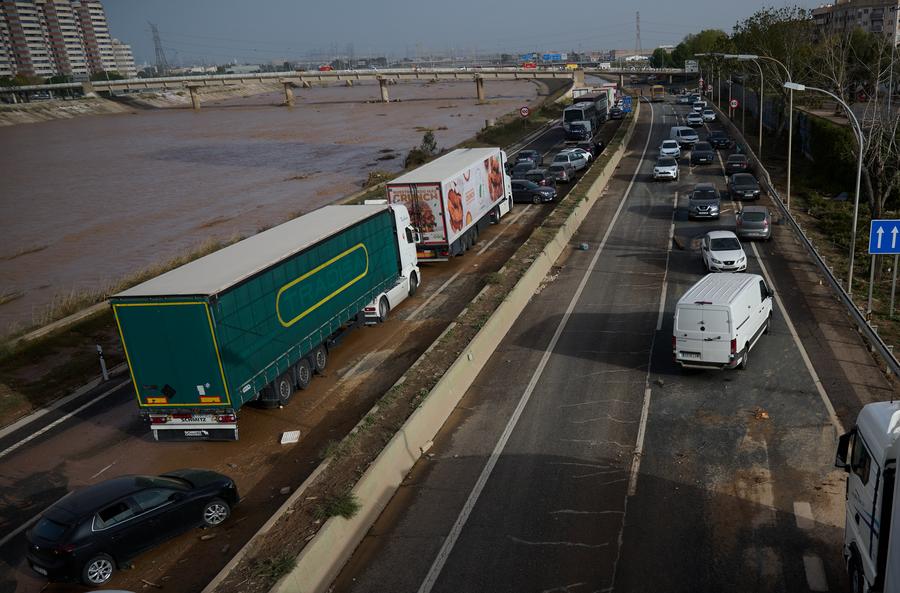
This photo shows a view of the flood-hit area in Valencia, Spain, Oct. 30, 2024. The Spanish government declared three days of official mourning on Wednesday. (Photo by Pablo Morano/Xinhua)
"The rainfall pattern in Spain is changing," stated Spain's National Meteorological Agency. "Studies have shown an increase in short-term heavy rains, and sometimes rainfall can even reach or exceed the annual average level."
As Spain mourns the lives lost in this latest disaster, the interplay between historical land use, modern climate challenges, and extreme weather underscores an urgent need for adaptation. The nation faces challenges in balancing drought mitigation with flood prevention to safeguard its communities in an era of unprecedented climate volatility.
Photos
Related Stories
- Spanish floods kill at least 205, PM pledges comprehensive support
- Severe floods cause significant casualties, property damage, with Chinese nationals affected in Spain
- Interview: Spanish AI director welcomes Spain-China scientific cooperation agreement
- Commentary: European countries' recognition of Palestinian state deepens U.S. isolation
- Israel says to stop work of Spanish consulate in Jerusalem for Palestinians
Copyright © 2024 People's Daily Online. All Rights Reserved.









